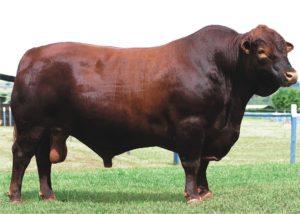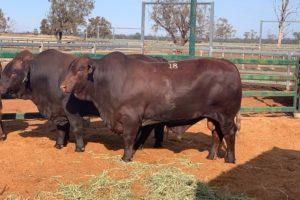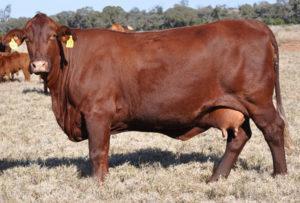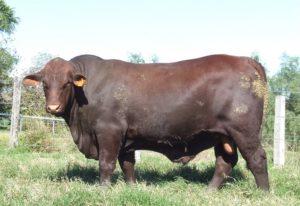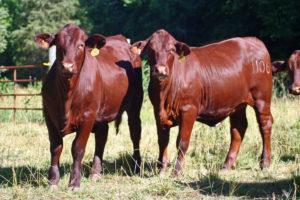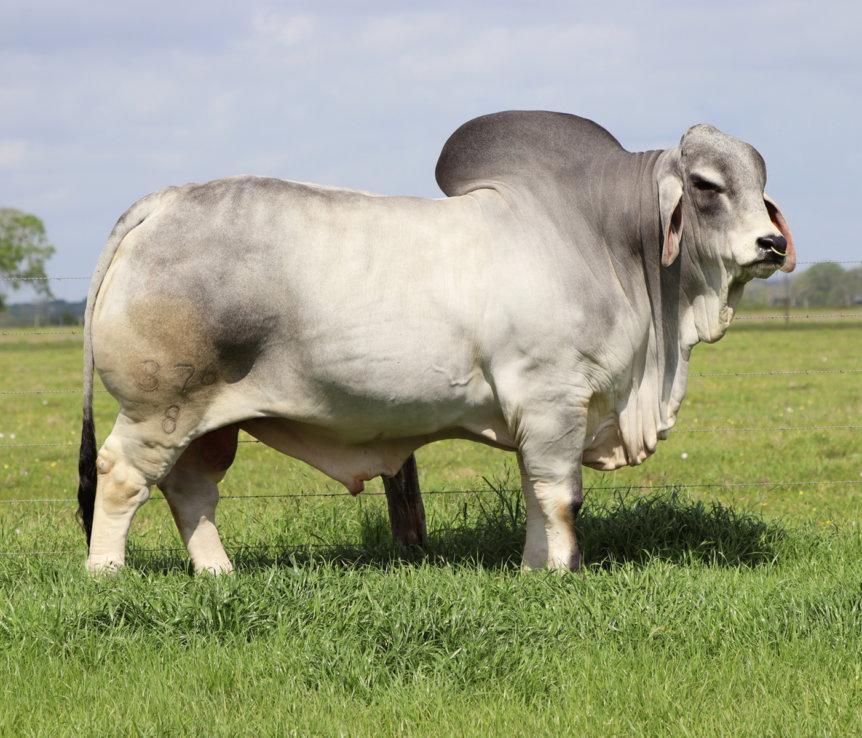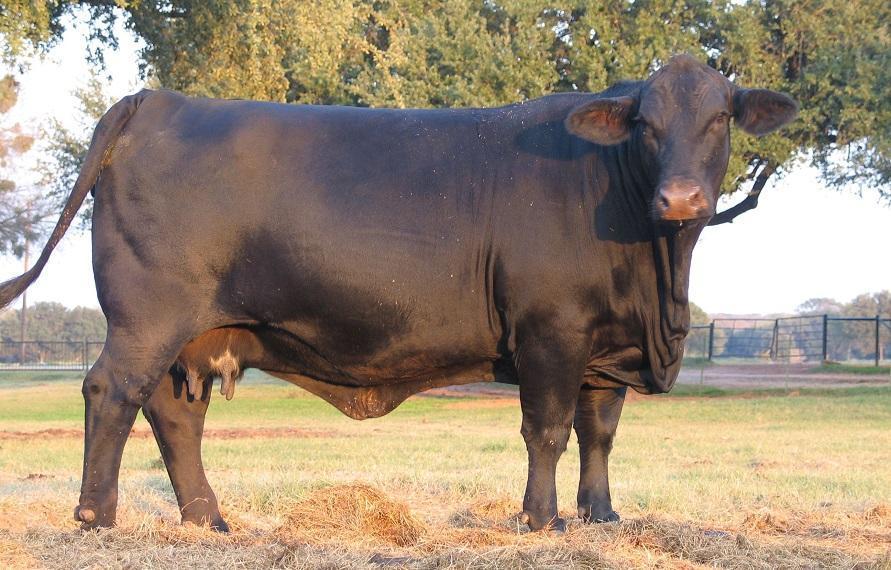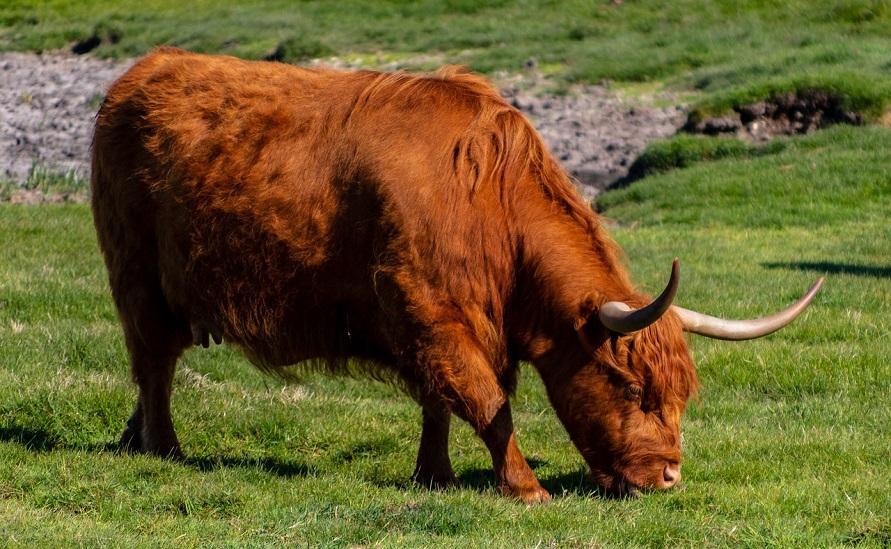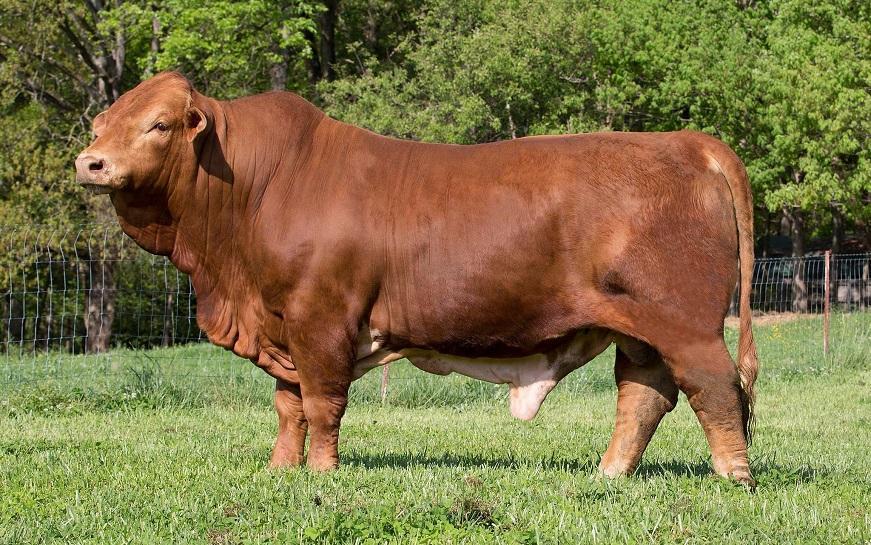Santa Gertrudis Cattle
The Santa Gertrudis cattle are a taurine-indicine hybrid originating in Texas, USA. It is reared for its beef and has spread to other parts of the world, including Australia, Brazil, and South Africa.
| Physical Characteristics | Broad, sturdy, well-muscled, and has loose skin |
| Temperament/Personality | Playful and gentle |
| Coat Color | Cherry red, though sometimes white markings are spotted on the forehead and flanks. |
| Size | Large |
| Weight | Male: 750–1000 kg Female: 600–850 kg |
| Uses | Meat |
| Diet | Grass |
| Lactation Period | 305 days |
| Gestation Period | 283 days |
| Lifespan | 13-15 years |
| Climate Tolerance | Hot, arid climates |
| Price | $1,262 |
| Country of Origin | The United States of America |
History and Development
The origin of an entire breed can rarely be traced back to a single progenitor, but that is the case with the Santa Gertrudis breed. In 1910, the King Ranch systematically tried to breed Indian Brahman with British Shorthorn cattle. This led to the birth of an outstanding bull called “Monkey”, who would become the sire for an entire herd, which could adapt to harsh environments. “Monkey” is the ancestor of all Santa Gertrudis cattle.
In 1940, the breed received official recognition, and a breed association was formed in 1951.
Milk Production
These cattle produce a lot of milk; however, most of it is used in developing their calves.
Meat Production
Meat produced by these cattle tends to have low fat, an excellent bone-to-meat ratio and is tender and juicy.
Interesting Facts
- Though the global population remains stable, the Santa Gertrudis has been at risk in the US as of 2021.

